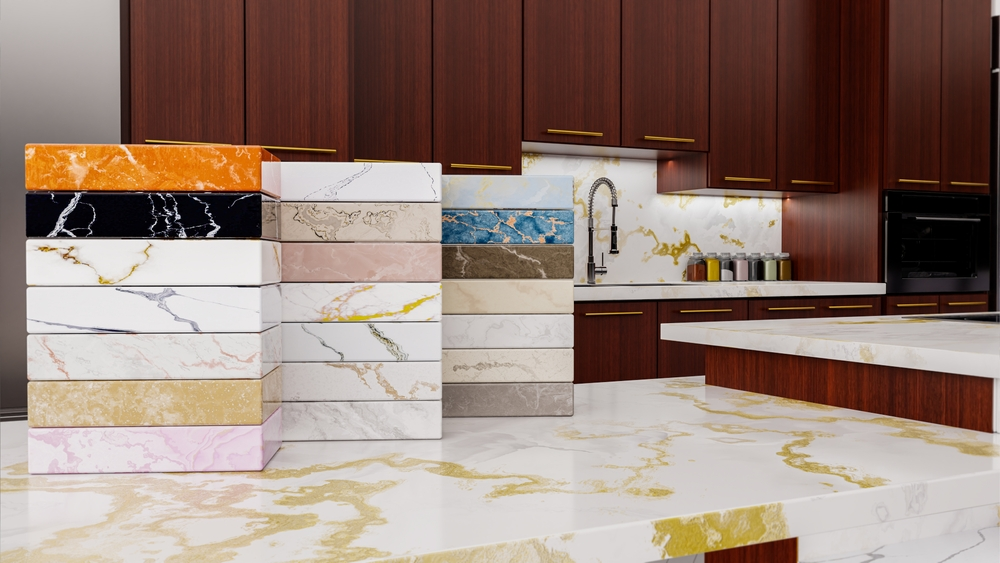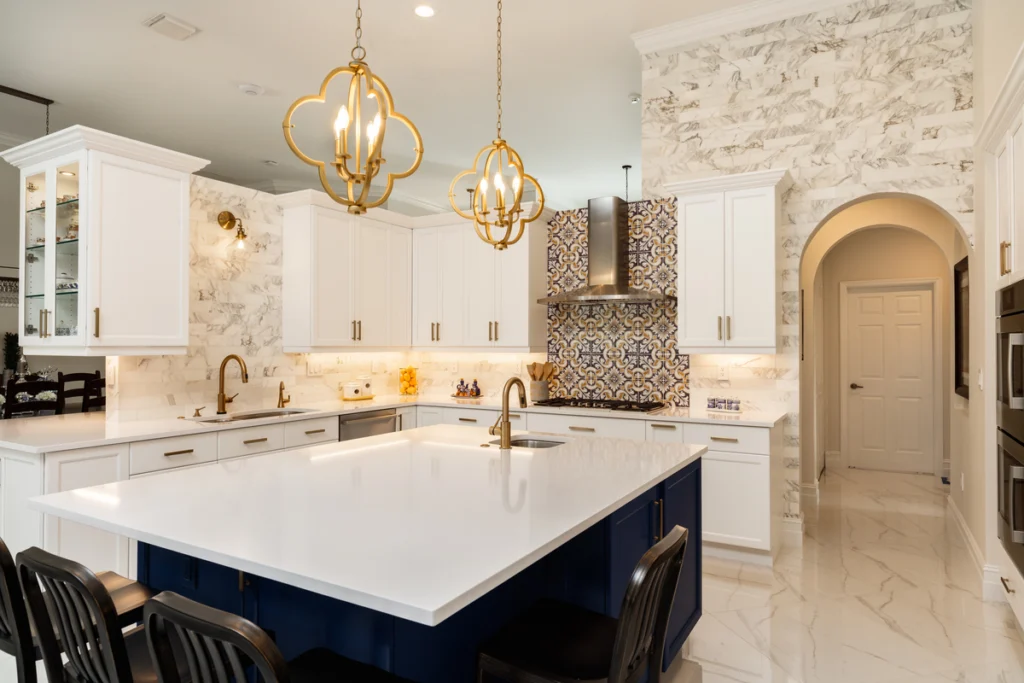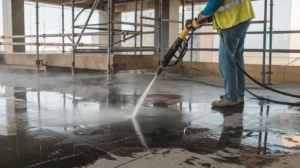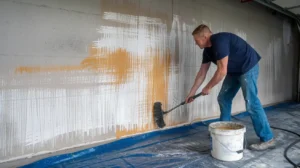Is marble heat resistant? This question often sparks a variety of opinions and misconceptions. Marble, known for its timeless beauty and elegance, is a popular choice in architecture and interior design.
However, there are persistent myths surrounding its ability to withstand heat. Many assume that marble, being a natural stone, is impervious to high temperatures, especially in contexts like fireplaces.
Understanding Marble's Heat Resistance
The Science Behind Marble
Composition and Structure:
Marble is a metamorphic rock that primarily consists of recrystallized carbonate minerals, usually calcite or dolomite. It forms through the metamorphism of limestone, subjected to heat and pressure over geological time. The mineral composition and crystalline structure contribute to its unique properties.
Natural Properties Affecting Heat Resistance:
Mineral Composition: The presence of calcium carbonate in the form of calcite gives marble its characteristic properties. Calcite has a relatively high melting point, contributing to marble’s heat resistance.
Crystalline Structure: The interlocking crystal structure of marble enhances its strength and resistance to heat. However, variations in the mineral composition and impurities can influence heat tolerance.
General Heat Resistance of Marble
Temperature Thresholds for Typical Usage:
- Marble is generally heat-resistant, but it is not impervious to damage under extreme conditions.
- The temperature threshold for marble can vary depending on its specific composition, with most types of marble able to withstand temperatures up to 1400°F (760°C) without significant damage.
- However, prolonged exposure to high temperatures or rapid temperature changes can lead to thermal stress and may cause cracks or discoloration.
Everyday Scenarios and Marble’s Performance:
Cooking Surfaces: Marble is commonly used in kitchens, but caution is advised. Direct contact with hot cookware or exposure to high temperatures for extended periods may result in damage. The use of trivets or hot pads is recommended to protect the marble surface.
Fireplaces: Marble is often used as a facing material for fireplaces. While it can handle the heat generated by a typical fire, it’s essential to avoid sudden temperature changes to prevent thermal shock.
Bathrooms: Marble is popular in bathrooms, but hot items like hair styling tools should be used with care. Wiping up spills promptly can prevent potential damage.
Is Marble Heat Resistant Fireplace

Marble is a popular material for fireplace surrounds and mantels due to its luxurious appearance, but its heat resistance can vary depending on the type of marble and its specific characteristics. Here are some considerations:
Exploring Marble as a Material for Fireplace Surrounds:
- Marble is a natural stone that can withstand heat to a certain extent, but it is not as heat-resistant as materials like granite or slate.
- The heat resistance of marble depends on its composition, density, and porosity. Some types of marble may be more prone to discoloration or damage when exposed to high temperatures.
Considerations for Fireplace Mantels Made of Marble:
- While marble is generally heat-resistant, it is essential to take precautions to prevent potential damage.
- Avoid direct contact with open flames or extremely high temperatures, as this can lead to discoloration, cracking, or other forms of damage.
- Installing a protective barrier, such as a fire screen, can help mitigate direct exposure to flames and heat.
- Choosing a honed finish for the marble rather than a polished one may be preferable, as polished surfaces can show heat-related damage more prominently.
Does Marble Crack with Heat?

Marble is a metamorphic rock composed mainly of calcite or dolomite crystals, and it is often used for various applications such as countertops, flooring, and sculptures. However, there are misconceptions about marble’s susceptibility to cracking when exposed to heat. One common myth is that marble cracks easily under high temperatures.
Factors influencing marble’s susceptibility to heat-induced damage:
Type of Marble:
Different types of marble have varying mineral compositions, making them respond differently to heat. Some types of marble may be more prone to thermal stress than others. For example, marble with a high magnesium content tends to be more heat-resistant.
Veining and Patterns:
The presence of veins and patterns in the marble can affect its thermal conductivity. Marble with more prominent veining may have variations in mineral content that can influence how it responds to temperature changes.
Thickness:
Thicker marble slabs generally have better thermal resistance than thinner ones. Thicker marble can absorb and dissipate heat more effectively, reducing the risk of thermal stress.
Finish and Sealant:
The finish applied to the marble and the presence of sealants can impact its response to heat. Polished surfaces may be more susceptible to thermal shock than honed surfaces. Sealants can provide an additional layer of protection against heat damage.
Rapid Temperature Changes:
Marble is more likely to crack when exposed to rapid temperature changes. Sudden shifts from hot to cold or vice versa can cause thermal stress. Precautions, such as using trivets or hot pads, can help mitigate this risk.
Maintenance and Care:
Regular maintenance and proper care can contribute to the longevity of marble surfaces. Avoid placing hot objects directly on marble surfaces, and promptly clean up any spills to prevent damage. If you want professional guidance then StoneSealerRestoration is the best choice.
Tips for Maintaining Marble in Heat
Preventive Measures to Enhance Heat Resistance:
Regular Cleaning and Maintenance:
- Dust and clean marble surfaces regularly to prevent the buildup of dirt and debris.
- Use a pH-neutral stone cleaner or a mixture of mild dish soap and water for regular cleaning. Avoid acidic or abrasive cleaners, as they can damage the marble over time.
- Wipe up spills promptly to prevent staining. Marble is porous and can absorb liquids, so quick action is essential.
Protective Measures During Extreme Heat Events:
Use Coasters and Trivets:
- Place coasters under hot dishes, glasses, or cookware to prevent direct contact with the marble surface.
- Use trivets or hot pads to provide an additional barrier between hot items and the marble.
Avoid Direct Sunlight Exposure:
- Protect marble surfaces from prolonged exposure to direct sunlight, especially if the marble is in an outdoor setting.
- Consider using blinds or curtains to minimize UV exposure, as prolonged sunlight can fade and discolor marble.
Temperature Control:
- Maintain a consistent indoor temperature, as extreme temperature fluctuations can cause marble to expand and contract, potentially leading to cracks.
- Use rugs or mats in high-traffic areas to help regulate temperature and protect the marble.
Sealing:
- Apply a high-quality, penetrating sealer to the marble surface. Sealing helps reduce the stone’s absorbency and enhances its resistance to heat and stains.
- Reapply the sealer as recommended by the manufacturer, typically every 6 to 12 months.
Avoid Placing Hot Items Directly on Marble:
- Never place hot pots, pans, or other heat-generating items directly on the marble surface. Use protective pads or trivets to prevent thermal shock.
Regular Inspections:
- Periodically inspect the marble for any signs of damage or wear, especially during and after extreme heat events.
- Address any issues promptly to prevent them from worsening over time.
Conclusion
The question of whether marble is heat-resistant involves considering several key points. Marble is a natural stone renowned for its elegance and durability, but its heat resistance depends on various factors.
While marble can withstand moderate heat, it is not entirely impervious to high temperatures. The specific type of marble, its thickness, and the finish it possesses all play crucial roles in determining its heat resistance. Feel free to contact us for any type of services or the query like is marble heat resistant.
FAQs
Is Marble Naturally Heat-Resistant?
Marble does have some inherent resistance to heat, but the extent of its tolerance depends on several factors.
What Factors Influence Marble’s Heat Resistance?
The type of marble, its thickness, and the surface finish play crucial roles in determining how well marble can withstand heat.
Can All Types Of Marble Handle High Temperatures Equally?
No, different types of marble exhibit varying degrees of heat resistance. Some may be more suitable for heat-prone areas than others.
Does The Finish Of The Marble Affect Its Heat Resistance?
Yes, the finish matters. Polished marble, for example, may be more vulnerable to heat damage than honed or leathered marble.
What Temperatures Can Marble Withstand?
While marble can handle moderate heat, it is not entirely impervious to high temperatures. Prolonged exposure to extreme heat can lead to damage.
Is It Safe To Use Marble Around Fireplaces Or In Kitchens?
Marble is commonly used in these areas, but precautions such as using trivets or hot pads are recommended to protect it from potential heat damage.
Our Services
Our Recent Post
How to Clean Concrete Floor | A Step-by-Step Guide for Sparkling Results
How to Clean Concrete Floor effectively is essential to maintaining...
Read MoreHow to Remove Paint from Concrete
How to Remove Paint from Concrete can be a challenging...
Read MoreTop 7 Popular Quartz Countertops Colors in 2024
Quartz countertops colors are at the forefront of modern interior...
Read MoreHow to Clean a Granite Composite Sink | Simple Steps for a Spotless Finish
How to Clean a Granite Composite Sink starts with understanding...
Read More




